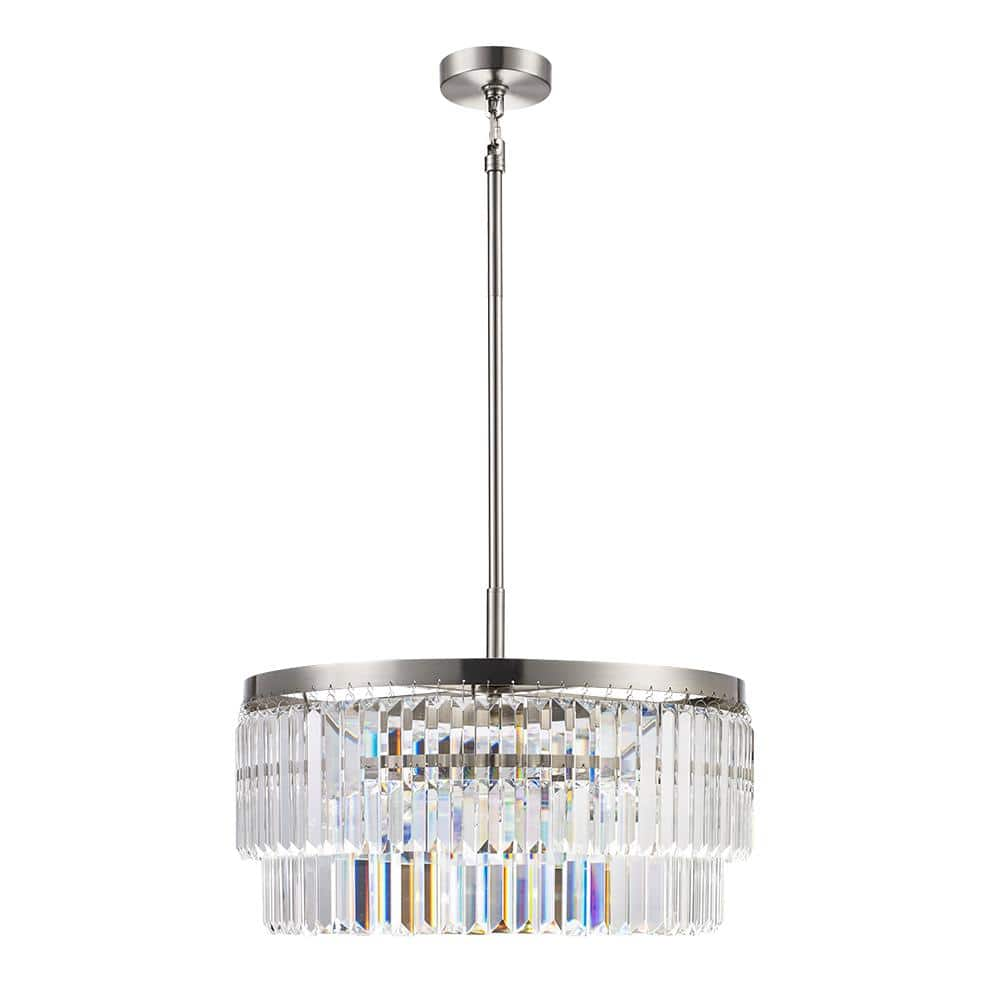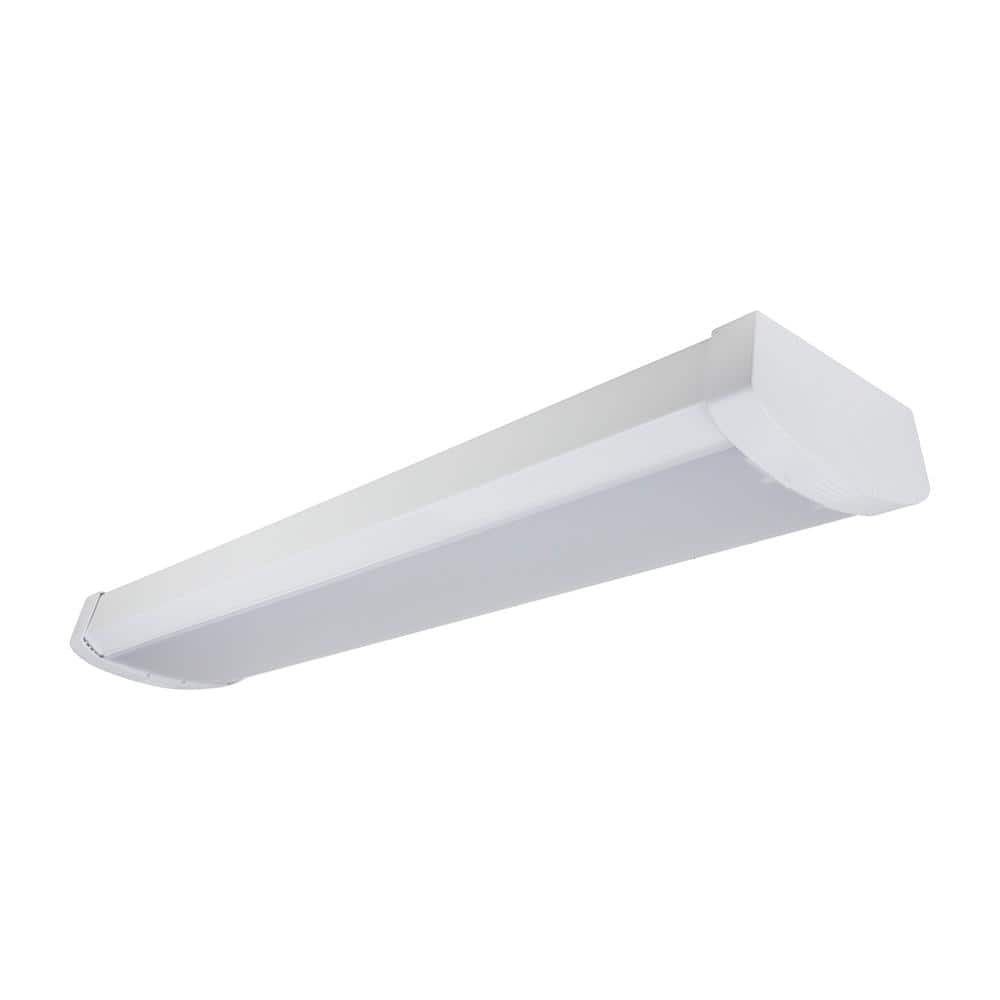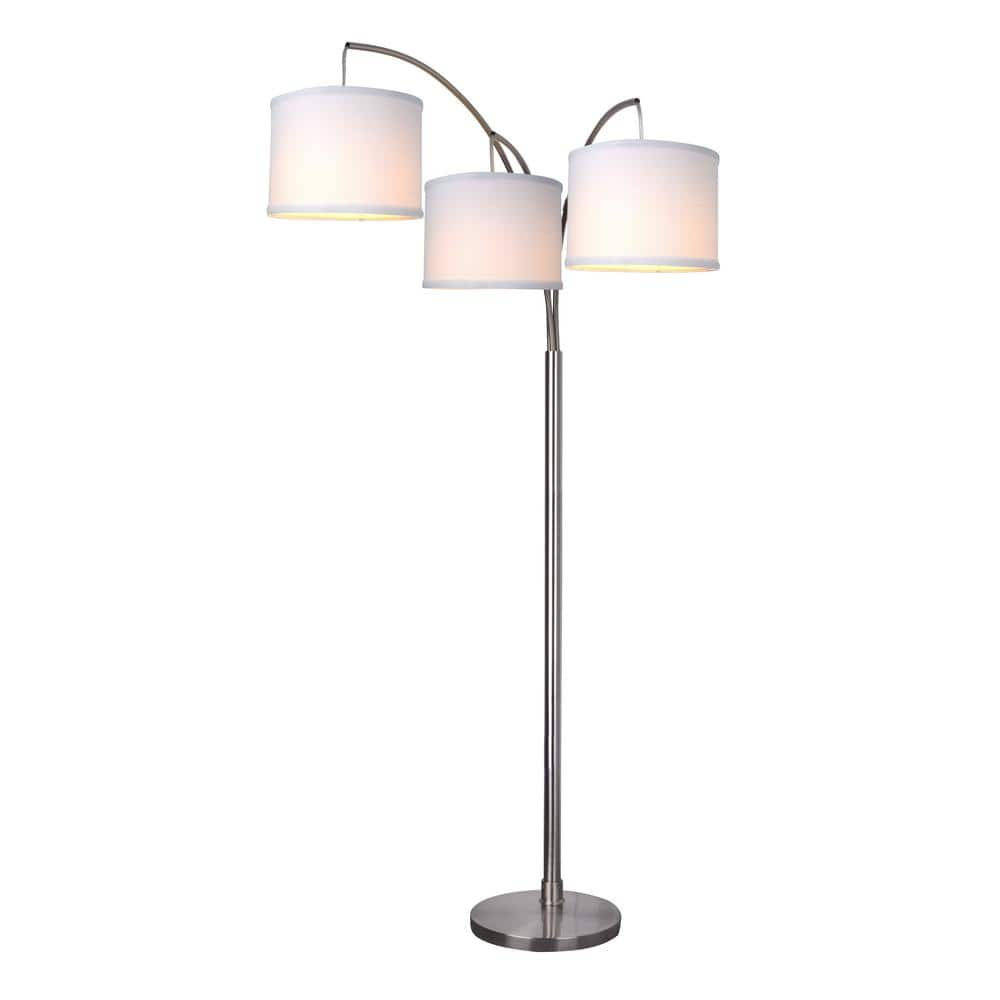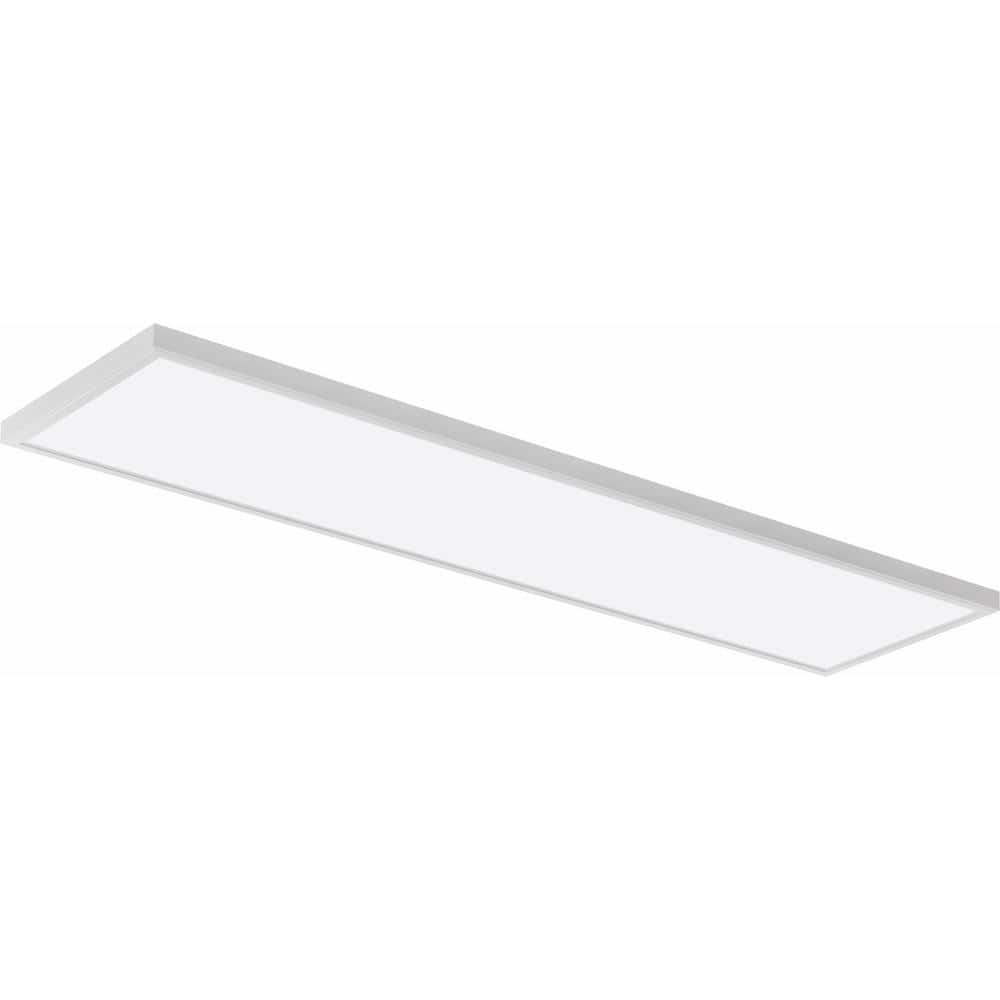Home Decorators Collection Winthrop 3-Light Modern Brushed Nickel Chandelier Light Fixture with Hanging Crystal Shade
Use as kitchen lighting, dining room lighting, foyer chandelier. Glam hanging ceiling light appeals to modern, designer décor. Uses (3) 60W E12 incandescent or LED light bulbs, not included.
Bring an elegant touch to your space by installing this Winthrop 3-Light Brushed Nickel Crystal Chandelier for Dining Room. It works well in your dining room, kitchen, foyer, or various other spaces around your home. It features a two-tiered drum-shaped shade along with crystal beads. The brushed nickel finish easily complements a variety of design schemes.
- Brushed nickel finish, metal hardware and matching canopy
- Uses three candelabra base bulbs, 60-Watt maximum (sold separately)
- LED light bulb compatible, use 60-Watt equivalent
- Glam crystal chandelier is a great focal point
- Adjustable hanging height from 17.625 in. up to 47.5 in.
- Includes (1) – 12 in. and (3) – 6 in. extension rods for an adjustable height
- Canopy measures 4.7 in. Dia and 1 in. H
- Can be hung from a sloped ceiling
- Easy assembly instructions included for quick set up
- Suitable for use in dry, indoor locations only
Additional information
| Chain Length (in.) | 30 |
|---|---|
| Fixture Depth (in.) | 20 |
| Fixture Height (in.) | 17.625 |
| Fixture Weight (lb.) | 16.06 |
| Fixture Width (in.) | 20 |
| Maximum Hanging Length (in.) | 47.5 |
| Mounting Deck Height (in.) | 1 |
| Mounting Deck Width (in.) | 4.7 |
| Certifications and Listings | ETL Listed |
| Manufacturer Warranty | 5 Year Limited Warranty |






by Robert
Looks great. The crystal pieces are high quality.
by Steve
Beautiful chandelier, which we weren’t sure if we wanted it in our foyer or dining room. They give you enough chain and wire to hang in a 2 story foyer. We opted for the dining room and it was a vast improvement to our previous 30 year old fixture. My wife and I installed this in a little over an hour. The scores of crystals were the most time consuming to install. We love it!
by Maria
Tedious to have to place each crystal on the chandelier but soooo worth it! It’s gorgeous and lights up the room.
by Pooly
Very nice on my dining room.
by Patters
This is a very good looking 3-Light Black Crystal Chandelier for that provides just the right amount of light for our Dining Room. It comes with several different lenghts of rods that allow you to assemble it to the height you want to get the right effect from the crystals. The black finish works great with our dining room furniture. The crystal beads have to be individually hung using the hooks that are attached to each one of them. That is a tedious task because there are so many of them that make up the 2-tiered drum shaped shade. The three lights shine brilliantly through the crystals.